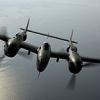Seems to be some confusion around other parts of the interweb so I will go into full blown detail and end it all. Diesels technically need an air to fuel ratio (A/F) of only 14.5:1 to have enough to burn all the diesel, however, in practice this ratio needs to be around 18-24:1. Even higher ratios are sometimes needed to stomp the EGT back down where it belongs. But the misconception is that boost is everything and nothing else matters. Although I said 18-24:1, I will use 18 for this entire article to keep from writing the entire 18-24 bit. Just remember that this is only for an example as ratios over 18 are needed quite often. Using 18 parts air, we are left with 1 part fuel. Thing is, the air does not mean a volume of air or pressure of air per say, but is a matter of molecules. It means 18 molecules of air for every 1 molecule of fuel. With this ratio, our engines can only support 129HP if there was no turbo. That is at 80% Volumetric Efficiency (VE),80F, and 2600RPM. This is because at a given pressure and temperature, there is only so many molecules of air that can fit into a given space (or volume). It is the same as putting balls in a jar, only so many will go in before the jar is full. With the given amount in there, the 1 part fuel that is allowed for every 18 parts air is only enough fuel to create 129HP. But my engine is rated at 215HP so now what! 215HP requires almost twice the number of air molecules as it takes to support 129HP. The magic happens because air is compressible. In school you learned that solids are packed very tightly, liquids are loose, and air is very loose and just drifts around. By shoving the air together, you can pack more of them into the same area. With enough force, you pack them so tight that it is the tightness of a liquid and will phase change (if heat is also released) but that takes way more pressure than we can get with our trucks. Anyhow,this force is boost. With more boost, you pack the molecules in tighter so you can get more into the same area. To make 215HP, I need 9.8psi of boost to cram in the number of air molecules needed to support the 18:1 ratio. The number of molecules within a given volume is called the density, and that is the key to it all. However, boost is not the only factor. Temperature also has an effect. As I said before, you can compress the air so that the molecules are shoved closer together so you can make room for more molecules. Temperature changes change the size of molecules. Hotter air makes them bigger, colder air makes the smaller. That means if the air is cold, then you don't have to compress the molecules as much because they are already taking up less space because they are smaller, therefore, you need less boost to get the same number of air molecules in there. The 9.8psi figure earlier was at 80F, but at 0F I only need 6.2psi. So temperature has a big effect as well, but it is important to remember that this is intake temp (IAT). The intercooler does a very good job so varying the turbo intake temp with cold air intakes and such does not have as drastic an effect on IAT, though the turbo would be a little more efficient since the air it is pumping is denser, but that is debatable and not the topic of this article. We are then left with volumetric efficiency which is how well the air can actually get into the combustion chamber. Low temps and high boost equating to the support for high power does nothing if you can't get it where it needs to be. This is why 24V's have a higher volumetric efficiency. More valves allow for more area to let the air in, so a 12V might have a VE of 80% whereas a 24V might be 90% or something. Porting and polishing also helps as a rough surface hinders good flow. The intake manifold can also pose an issue during high load/power conditions because pistons 1 an 6 are way off to the side of it so the air has to slam into the bottom of the manifold then wander over to the far ends of the manifolds, therefore, 1 and 6 have a less VE than 3 and 4, which is also one reason 1 and 6 run hotter since the fueling is the same to all cylinders but with less VE on 1 and 6 they end up with a richer burn. Turbo drive pressure also has an effect which is directly linked to turbine efficiency. If the drive pressure is much higher than boost pressure, then scavenging during valve overlap is hindered. It is possible to get lower drive pressure than boost pressure with a turbo that is efficient. So there you have it, number of air molecules is key. Though comparing equal molecules of air with different IAT meaning less boost when colder, gives you much higher pressure and temperature at TDC for the hotter IAT/higher boost compared to the colder/less boost scenario. I am going to figure out the exact pros and cons of both. I did read an article this morning done at some testing center with everything the same except varying IAT and at low load colder air proved to have better efficiency. However, at part load higher IAT's had better efficiency. They didn't do a test for full load. But this is interesting and adds another layer of thought to this article which I will research some more and add to this article when I figure it out.



There are no reviews to display.